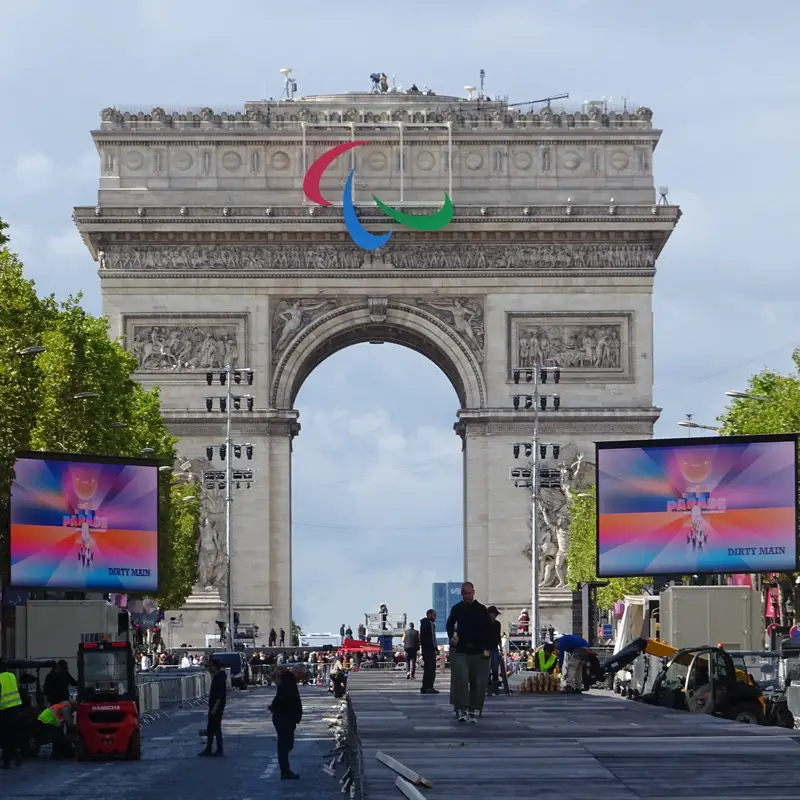The Arc de Triomphe in Paris: A Monumental Celebration of French Victories
The Arc de Triomphe is a Parisian icon commemorating Napoleon’s triumphs. This monument offers views of the Champs-Élysées and modern La Défense.
Historical Roots of the Arc
The Arc de Triomphe stands at the roundabout Place Charles-de-Gaulle (formerly Place de l’Étoile) at the intersection of the 8th, 16th, and 17th arrondissements in Paris, where twelve grand avenues converge. Ordered by Emperor Napoleon I after the victorious Battle of Austerlitz, the monument was initially planned to be located near the Bastille as an entry point to the city. It was eventually built at its current site, offering a magnificent view of the Champs-Élysées.
Architectural Mastery
Construction of the Arc began in 1806 and was completed over thirty years later by architect Guillaume-Abel Blouet in 1836. The Arc de Triomphe is 49.54 meters high, 44.82 meters wide, and 22.21 meters deep. Weighing approximately 50,000 tons or 100,000 tons including its foundation this massive structure is adorned with reliefs and sculptural scenes depicting significant events in French history, including the famous “Departure of the Volunteers” (La Marseillaise) by François Rude.
Exceptional Views of Paris
Visiting the Arc de Triomphe provides a unique opportunity for panoramic views of Paris. From the observation platform at the top, visitors can see the Champs-Élysées, the Eiffel Tower, Montmartre with the Sacré-Cœur Basilica, the modern district of La Défense, and even the distant Bois de Boulogne. The platform is accessible by 284 steps, though a lift is available to take visitors almost to the top for convenience.
Symbolism and Daily Traditions
The Arc de Triomphe is a site of remembrance and honor. Every evening, the Flame of Remembrance is ceremonially lit beneath the Arc to commemorate the Unknown Soldier buried there. This tradition, which began in 1923, is a significant part of French history and attracts both tourists and locals.
Art and Modern Interpretation
In 2021, the Arc de Triomphe became the focus of attention with the “L’Arc de Triomphe, Wrapped” project. This unique artistic endeavor was realized by the renowned artist Christo and his team, who covered the monument in silvery fabric tied with blue ropes. This temporary project attracted millions of visitors and highlighted contemporary artistic interpretations of classical landmarks.
Practical Information for Visitors
Situated on Place Charles-de-Gaulle, the Arc is easily accessible. The nearest metro station is Charles de Gaulle – Étoile (line 1), located right next to the monument. Tickets can be purchased online or on-site, though pre-purchasing is recommended to avoid waiting times. The observation deck is open year-round, with the best times to visit being early morning or late evening when Paris is illuminated by lights.
Hidden Gems and Tips
Few people know that beneath the Arc de Triomphe lies a small museum detailing the history of its construction and its significance over the years. The Arc has also witnessed major historical events, such as the ceremonial troop parade in 1919 following the end of World War I and protest demonstrations. Visiting the Arc in the evening is particularly rewarding, as the monument’s illumination and the magical atmosphere of the Champs-Élysées create an unforgettable experience.








